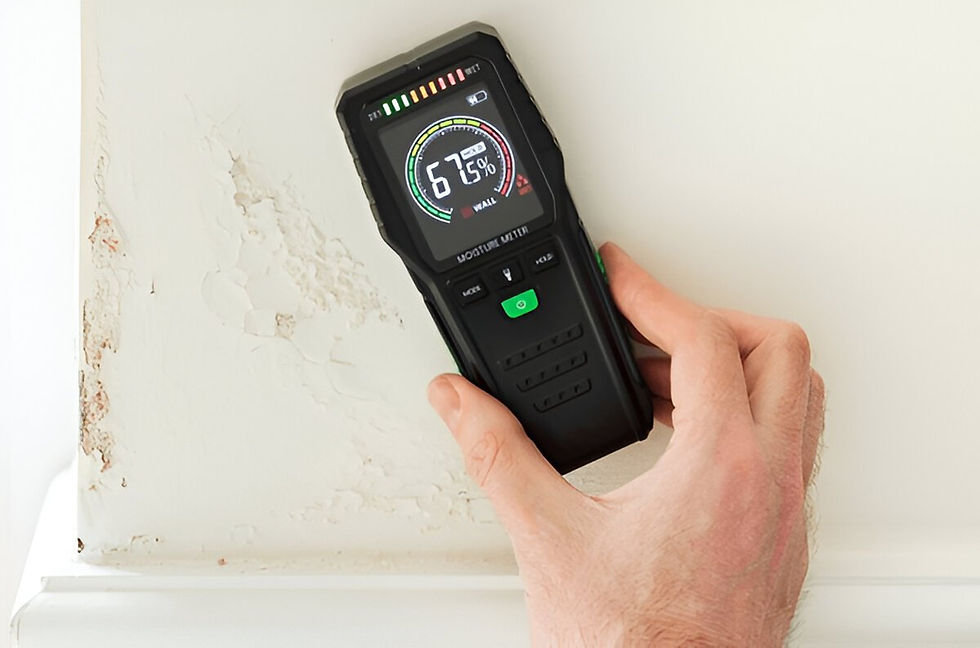Visual Mold Inspection in Elizabeth NJ: How to Spot the Hidden Threat in Your Walls
- mariotovaropo
- Jun 25
- 4 min read
Mold is a pervasive issue that can silently infiltrate homes, often going unnoticed until it has caused significant damage or health concerns. In Elizabeth, NJ, where humidity levels can fluctuate, understanding how to conduct a visual mold inspection In Elizabeth NJ is crucial for homeowners. This article will guide you through the process of identifying mold, understanding its implications, and knowing when to seek professional help.
Understanding Mold and Its Risks
Mold is a type of fungus that thrives in damp environments. It can grow on various surfaces, including wood, drywall, and even fabric. The presence of mold can lead to a range of health issues, particularly for individuals with respiratory conditions, allergies, or weakened immune systems.
Health Implications of Mold Exposure
Exposure to mold can result in several health problems, including:
Respiratory Issues: Mold spores can irritate the lungs and airways, leading to coughing, wheezing, and difficulty breathing.
Allergic Reactions: Many people are allergic to mold, experiencing symptoms such as sneezing, runny nose, and skin rashes.
Toxic Reactions: Certain types of mold produce mycotoxins, which can be harmful when inhaled or ingested.
Common Types of Mold Found in Homes
In Elizabeth, NJ, homeowners may encounter various types of mold, including:
Aspergillus: Commonly found in homes, it can cause respiratory issues.
Cladosporium: Often found in damp areas, it can trigger allergic reactions.
Stachybotrys (Black Mold): Known for its toxicity, it requires immediate attention.
Signs of Mold Growth
Identifying mold early can prevent extensive damage and health risks. Here are some common indicators of mold presence:
Visual Signs
Discoloration: Look for patches of green, black, or white on walls, ceilings, or floors.
Water Stains: Dark spots or streaks may indicate moisture issues that can lead to mold growth.
Peeling Paint or Wallpaper: This can be a sign of underlying moisture problems.
Odor
A musty or earthy smell often accompanies mold growth. If you notice this odor, it may be time to investigate further.
Conducting a Visual Mold Inspection
Performing a visual mold inspection in your home can help you identify potential problems before they escalate. Here’s how to conduct an effective inspection:
Step 1: Gather Your Tools
Before starting your inspection, gather the following tools:
Flashlight: To illuminate dark areas.
Camera: To document any findings.
Moisture Meter: To check for dampness in walls and surfaces.
Step 2: Inspect Common Areas
Focus on areas where mold is likely to thrive:
Basements and Crawl Spaces: These areas are often damp and poorly ventilated.
Bathrooms: Check around sinks, tubs, and toilets for signs of mold.
Kitchens: Inspect under sinks and around appliances for leaks.
Step 3: Check for Hidden Mold
Mold can hide behind walls and under flooring. Look for:
Water Damage: Signs of leaks or water intrusion can indicate hidden mold.
Condensation: Areas with high humidity may harbor mold growth.
When to Call a Professional
While some mold issues can be handled by homeowners, others require professional intervention. Here are signs that it’s time to call in the experts:
Extensive Growth
If you discover mold covering an area larger than 10 square feet, it’s advisable to seek professional help.
Health Concerns
If anyone in your household experiences health issues related to mold exposure, consult a mold remediation specialist.
Structural Damage
If mold has compromised the integrity of your home, such as rotting wood or damaged drywall, professional assistance is necessary.
The Mold Remediation Process
If mold is detected, remediation is essential to ensure a safe living environment. Here’s what the process typically involves:
Assessment
A professional will conduct a thorough assessment to identify the extent of the mold problem and its source.
Containment
To prevent the spread of mold spores, the affected area will be contained using plastic sheeting and negative air pressure.
Removal
Mold-infested materials may need to be removed and disposed of properly. This can include drywall, insulation, and carpeting.
Cleaning and Disinfection
Surfaces will be cleaned and disinfected to eliminate any remaining mold spores.
Restoration
After remediation, any damaged materials will be replaced, restoring your home to its original condition.
Preventing Future Mold Growth
Once mold has been removed, it’s crucial to take steps to prevent its return. Here are some effective strategies:
Control Humidity Levels
Keep indoor humidity below 60% by using dehumidifiers and ensuring proper ventilation.
Fix Leaks Promptly
Address any plumbing or roof leaks immediately to prevent moisture accumulation.
Regular Inspections
Conduct routine inspections of your home, especially in areas prone to dampness.
Conclusion
Visual mold inspection in Elizabeth, NJ, is an essential skill for homeowners. By understanding the risks associated with mold, recognizing the signs of growth, and knowing when to seek professional help, you can protect your home and health. Regular inspections and preventive measures will ensure that your living environment remains safe and mold-free.
For more information about Visual mold inspection in Elizabeth NJ in Elizabeth New Jersey please contact:
Business Name: Green Guard Mold Specialist Elizabeth
Address: 919 S Elmora Ave, Elizabeth, NJ 07202
Phone Number: 888-861-7846
Google Map: https://maps.app.goo.gl/sBzFpCgjU9bd8sibA





Comments